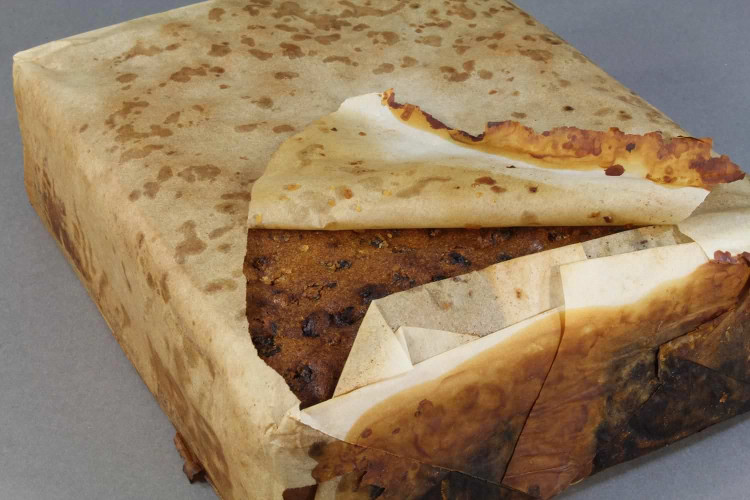Fruit pastries can still be eaten after 100 years
The fruit sweet cake retains its delicious shape and flavor after a century in the coldest, driest and windiest place on the planet.
Conservation experts from New Zealand's Antarctic Heritage Trust found a 100-year-old dessert cake in the oldest building in Antarctica, a tent in the peninsula of Cape Adare, National Geographic on August 10 reported. . British explorer Robert Falcon Scott brought along dishes made by Huntley & Palmers biscuit company during the expedition in 1910 - 1913 on the Terra Nova.
Located in the middle of the paper wrapped in a can, the delicious pastry is preserved in perfect condition. The cake still retains its shape and aroma, and is almost edible.

The original pastry in Antarctica after a century.(Photo: Antarctic Heritage Trust).
Scott's expedition resided in the tent of Cape Adare peninsula, built by the Norwegian explorer Carsten Borchgrevink and his associates in 1899. They forgot the cake when they left. Scott and the crew of four people arrived at the South Pole in 1912, but all five died on the way back to Terra Nova tent at Evans's nose.
" Fruit cakes are a popular dish in British society at the time, and are still loved to this day. Living and working in Antarctica often leads to a feeling of craving for high sugar foods. High fat and sweet fruit cakes are a great choice to go with a cup of tea, ' shared Lizzie Meek, Antarctic Heritage Trust artifact conservation manager.
Conservationists restore the 15-meter-long Terra Nova tent, the largest tent in Antarctica, and some other mobile wooden tents as they were built a century ago. According to Gordon Macdonald, conservation leader, tents will help tell the story of the Antarctic expedition, inspiring future generations.
- Different kinds of vegetables and fruits should not be eaten together
- Summer, which fruit is the best?
- If this kind of fruit is eaten, it will add enough sugar. If we don't know, we will die immediately
- Discover orange-like fruits but extremely toxic in Vietnam
- The experience of eating cloth is not poisoned, not hot
- Fruit cake is nearly 200 years old
- Surprise with the effects of the fruit
- 15 kinds of fruits in Vietnam are listed in the 25 most exotic fruits in the world
- Two types of fruit should not be used when drinking alcohol
- 6 types of morning fruits are 'medicinal herbs' dinner is 'poison'
- Should you eat ripe mango or green mango?
- 6 types of fruits should be eaten when suffering from heartburn
 Discovered an ancient centipede fossil 99 million years old
Discovered an ancient centipede fossil 99 million years old Discovered bat-like dinosaurs in China
Discovered bat-like dinosaurs in China Discovered a 200-year-old bronze cannon of the coast
Discovered a 200-year-old bronze cannon of the coast Discover 305 million-year-old spider fossils
Discover 305 million-year-old spider fossils The poleless tent inflates itself in 3 minutes
The poleless tent inflates itself in 3 minutes  Take inspiration from polar bears to create a one-of-a-kind shelter
Take inspiration from polar bears to create a one-of-a-kind shelter  Underwater tent - the key to realizing a picnic dream in ... the ocean
Underwater tent - the key to realizing a picnic dream in ... the ocean  Try living in an airtight tent with 200 trees to test oxygen and the end
Try living in an airtight tent with 200 trees to test oxygen and the end  Tents are for life on Mars
Tents are for life on Mars  Experiment with special folding tents for use on the moon
Experiment with special folding tents for use on the moon 